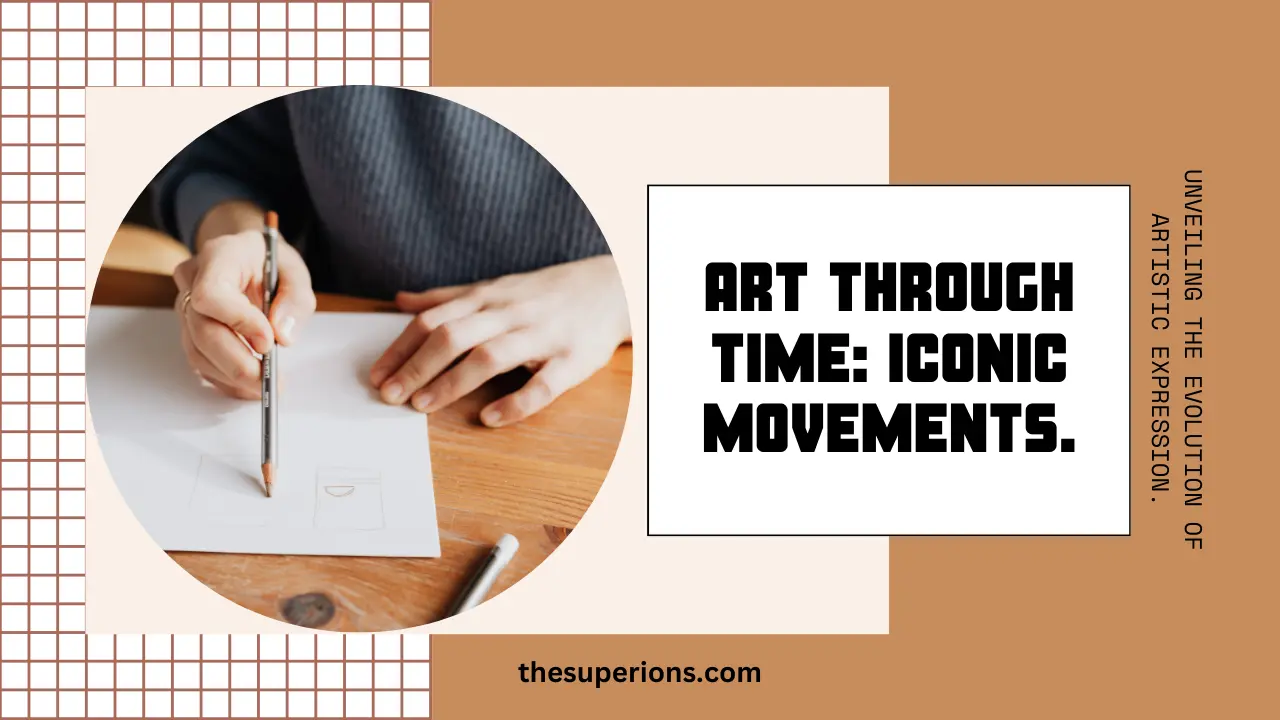A Journey Through Art History: Exploring Iconic Movements
Art history is a vast and intricate tapestry woven from centuries of creative expression. Each era and movement has left an indelible mark on the cultural landscape, influencing subsequent generations and reflecting the societal values and technological advancements of their times. This journey through art history explores key movements and their defining characteristics, providing a window into the evolution of artistic expression that can enrich any canvas wall art collection.

The Renaissance: Rebirth of Classical Ideals
The Renaissance, spanning from the 14th to the 17th century, marked a pivotal moment in art history. Originating in Italy, this period saw a revival of classical Greek and Roman ideals, emphasizing humanism, proportion, and perspective. Renowned artists like Leonardo da Vinci, Michelangelo, and Raphael produced masterpieces that remain iconic today.
Leonardo’s “Mona Lisa” and Michelangelo’s “David” exemplify the Renaissance’s focus on human anatomy and realism. These works showcased a profound understanding of the human form, capturing emotions and lifelike details that continue to captivate audiences. Investing in canvas wall art inspired by the Renaissance can bring a touch of classical elegance to any space.
People Also Read?
Baroque: Dramatic Expressions and Grandiose Details
Following the Renaissance, the Baroque period emerged in the late 16th century, characterized by dramatic expressions, grandeur, and detailed ornamentation. This movement sought to evoke emotion and awe through its dynamic compositions and intense use of light and shadow.
Artists like Caravaggio and Peter Paul Rubens were instrumental in defining the Baroque style. Caravaggio’s “The Calling of St. Matthew” showcases his mastery of chiaroscuro, creating a stark contrast between light and dark to highlight the scene’s dramatic tension. Rubens’ “The Elevation of the Cross” exemplifies the grandeur and emotional intensity that Baroque art is known for. Incorporating Baroque-inspired canvas wall art can add a sense of drama and opulence to your decor.
Rococo: Elegance and Playfulness
The Rococo movement, which flourished in the early to mid-18th century, was characterized by its lightness, elegance, and playful themes. Originating in France, Rococo art often depicted scenes of love, nature, and frivolity, with a pastel color palette and intricate details.
Artists like Jean-Honoré Fragonard and François Boucher epitomized the Rococo style. Fragonard’s “The Swing” is a quintessential example, portraying a young woman in a lush garden, surrounded by a sense of whimsy and flirtation. Boucher’s “Madame de Pompadour” captures the elegance and sophistication of Rococo portraiture. Adding Rococo-inspired canvas wall art to your collection can infuse your space with a touch of romantic charm and sophistication.
Neoclassicism: Return to Classical Simplicity
As a reaction to the excesses of the Rococo, the Neoclassical movement emerged in the mid-18th century, drawing inspiration from the simplicity and order of classical antiquity. Neoclassical art emphasized harmony, restraint, and a return to classical ideals.
Prominent artists like Jacques-Louis David and Jean-Auguste-Dominique Ingres played pivotal roles in this movement. David’s “Oath of the Horatii” exemplifies the Neoclassical focus on stoic heroism and moral virtue, with its clear lines and balanced composition. Ingres’ “Grande Odalisque” blends classical form with a touch of exoticism, showcasing the movement’s versatility. Neoclassical canvas wall art can bring a sense of order and refinement to your home.
Romanticism: Embracing Emotion and Nature
In the late 18th to mid-19th century, Romanticism emerged as a response to the industrial revolution and the Enlightenment’s emphasis on reason. Romantic art celebrated emotion, individualism, and the sublime beauty of nature.
Artists like Francisco Goya and Caspar David Friedrich embodied the Romantic spirit. Goya’s “The Third of May 1808” captures the raw emotion and horror of war, while Friedrich’s “Wanderer Above the Sea of Fog” evokes a sense of awe and introspection. Incorporating Romantic-themed canvas wall art into your decor can add depth and emotional resonance to your space.
Impressionism: Capturing Light and Moment
The Impressionist movement, which began in the late 19th century, revolutionized the art world with its focus on capturing fleeting moments and the effects of light. Impressionist artists often painted en plein air (outdoors), using quick brushstrokes to convey the immediacy of their observations.
Claude Monet, Edgar Degas, and Pierre-Auguste Renoir were leading figures in this movement. Monet’s “Impression, Sunrise” gave the movement its name, depicting a harbor scene with loose brushwork that emphasizes the play of light. Degas’ “Ballet Rehearsal” captures the grace and spontaneity of dancers in motion. Adding Impressionist canvas wall art to your collection can bring a sense of vibrancy and dynamism to your home.
Modernism: Breaking Boundaries and Exploring New Forms
The 20th century saw the rise of Modernism, a broad movement that encompassed various styles and approaches, all unified by a desire to break away from traditional forms and explore new ways of expression. Modernist art is characterized by its experimentation with abstraction, color, and form.
Artists like Pablo Picasso, Wassily Kandinsky, and Piet Mondrian were at the forefront of this movement. Picasso’s “Les Demoiselles d’Avignon” shattered conventional representations of the human form, while Kandinsky’s “Composition VII” delved into pure abstraction, exploring the emotional impact of color and shape. Mondrian’s “Broadway Boogie Woogie” epitomizes the geometric abstraction that defined much of Modernist art. Modernist canvas wall art can add a bold and contemporary edge to your decor.
People Also Read?
How Does Good Quality Furniture Enhance Your Home’s Outdoor Appeal?
Conclusion
A journey through art history reveals the rich tapestry of human creativity and the myriad ways artists have responded to their world. From the classical elegance of the Renaissance to the bold experimentation of Modernism, each movement offers unique insights and inspiration. By incorporating canvas wall art from these various periods, you can create a visually engaging and historically rich environment that celebrates the enduring power of art.





